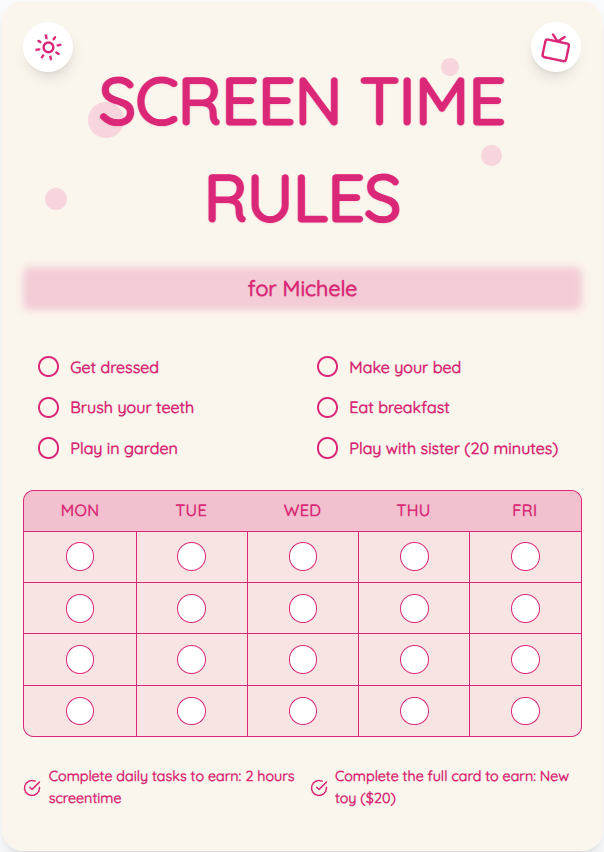WHO Screen Time Guidelines: What Parents Need to Know
As a parent, navigating the world of screen time can be overwhelming. Understanding the WHO screen time guidelines for children aged 2-12 is crucial in promoting healthy tech habits. Let's explore these guidelines and practical tips to create a balanced approach to screen time for your child's well-being.
See What Your Screen Time Chart Will Look Like
Here's an example of a beautiful, customizable screen time rules chart you can create for your family

Importance of WHO Screen Time Guidelines
The WHO recommends limiting screen time for children aged 2-4 to one hour per day, focusing on high-quality educational content. For children aged 5-12, screen time should be balanced with physical activity and sleep. Excessive screen time has been linked to various health and developmental issues in children.
Practical Tips for Managing Screen Time
1. Create a screen time schedule using a screen time chart generator like ScreenTimeRules.com. 2. Encourage outdoor play and other non-screen activities. 3. Set clear limits and boundaries around screen time usage. 4. Engage in tech-free family activities to promote bonding.
Put These Tips Into Action
Create a custom chart to implement these strategies with your child
Balancing Screen Time with Child Development
Excessive screen time can impact language development, social skills, and cognitive abilities in children. By following the WHO guidelines and incorporating educational screen time activities, parents can support their child's holistic development.
Practical Tips for Success
- Use screen time as a reward for completing chores or homework.
- Engage in co-viewing to discuss and interact with the content your child is watching.
- Model healthy screen time habits by limiting your own device use in front of your child.
Frequently Asked Questions
How can I enforce screen time limits without tantrums?
Consistency is key. Clearly communicate the rules, use visual aids like a screen time chart, and offer alternative activities to ease the transition.
Are educational apps considered beneficial screen time?
Yes, educational apps can be valuable as long as they are age-appropriate and used in moderation alongside other activities like reading, outdoor play, and creative pursuits.
What are the signs of excessive screen time in children?
Signs include irritability when screens are taken away, difficulty focusing on non-screen activities, disrupted sleep patterns, and physical health issues like eye strain.
By understanding and implementing the WHO screen time guidelines, parents can foster a healthy relationship with technology for their children. Remember, moderation is key. Explore the benefits of using a screen time chart generator like ScreenTimeRules.com to simplify screen time management. Start creating a balanced tech environment that promotes your child's well-being today.
Ready to Transform Your Family's Screen Time?
Join thousands of parents who have successfully managed screen time with our customizable charts.
